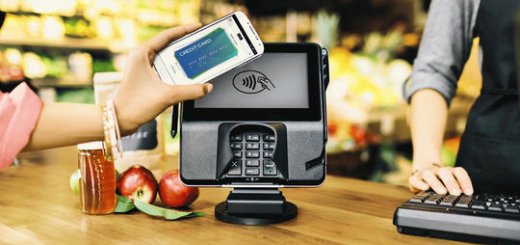
In 2015 mobile payment systems will continue to jockey for market share. ApplePay vs. CurrentC. Google Wallet vs. Square. Each payment method has its detractors and champions, its perks and shortfalls. Each wants your dollars to go through their mobile processes. But there is one feature every payment method in the mobile age must have: accessibility for people with disabilities.
share on linkedinshare on bluesky
What do we know about accessibility of mobile payment industry leaders?
ApplePay starts with a big advantage. Apple products and services are generally designed with accessibility in mind. And Apple CEO Tim Cook is committed to accessibility, without regards to the bottom line. “When we work on making our devices accessible by the blind,” he told an annual stockholders meeting in 2014, “I don’t consider the bloody ROI.”
ApplePay, like other apple products and services, has received favorable accessibility reviews. You can read one by iOS accessibility writer Steven Aquino who published an article titled Apple Pay: Inclusive and empowering by design, praising the accessibility features of Apple Pay.
Square has also shown its commitment to accessibility. In 2013 the company agreed to work with the National Federation of the Blind on accessibility enhancements to its products. Read the July 22, 2013 NFB Square press release. Earlier in 2013 NFB announced an accessibility commitment from developers of the mobile payment app LevelUp. Read the January 8, 2013 NFB LevelUp Press Release.
What About CurrentC?
CVS, Walmart, 7-Eleven and other national retailers are putting their money behind an ApplePay competitor: CurrentC by MCX. MCX does not provide any accessibility information on its website. That’s too bad. I always recommend companies post an Accessibility Information Page to let the public know about its accessibility commitment, and to provide contact information if any accessibility barriers or bugs are uncovered. Read about companies with Accessibility Information Pages.
Retailers who opt for CurrentC by MCX are hopefully making sure accessibility is included in the service and testing for accessibility with a cross section of all users, both with and without disabilities. If CurrentC can’t be used by all shoppers, retailers will be on the hook for accessibility violations.
The ADA requires that Mobile Applications Work for Everyone
The United States Department of Justice says that mobile applications must be accessible to blind users under the ADA. In March of 2014 it announced a settlement with H&R Block that required the tax giant to make both its website and mobile applications accessible. In November it announced a similar enforcement action with grocery delivery site Peapod.
Mobile payment system apps must be accessible too. If they aren’t, developers and retailers who use them run the risk of a DOJ enforcement action or being the subject of legal action by customers with disabilities.
Read more about the DOJ’s work to make websites and mobile applications accessible.
For blind users, the accessibility of mobile payment systems depends on the accessibility of the customer-facing mobile applications. Want to learn more about making mobile applications accessible? The BBC’s Mobile Accessibility Standards and Guidelines are a good place to start learning about mobile accessibility.
2015 will see more and more financial transactions moving to mobile. In the battle of the mobile payment systems may the best company prevail — and may all services be accessible to everyone.